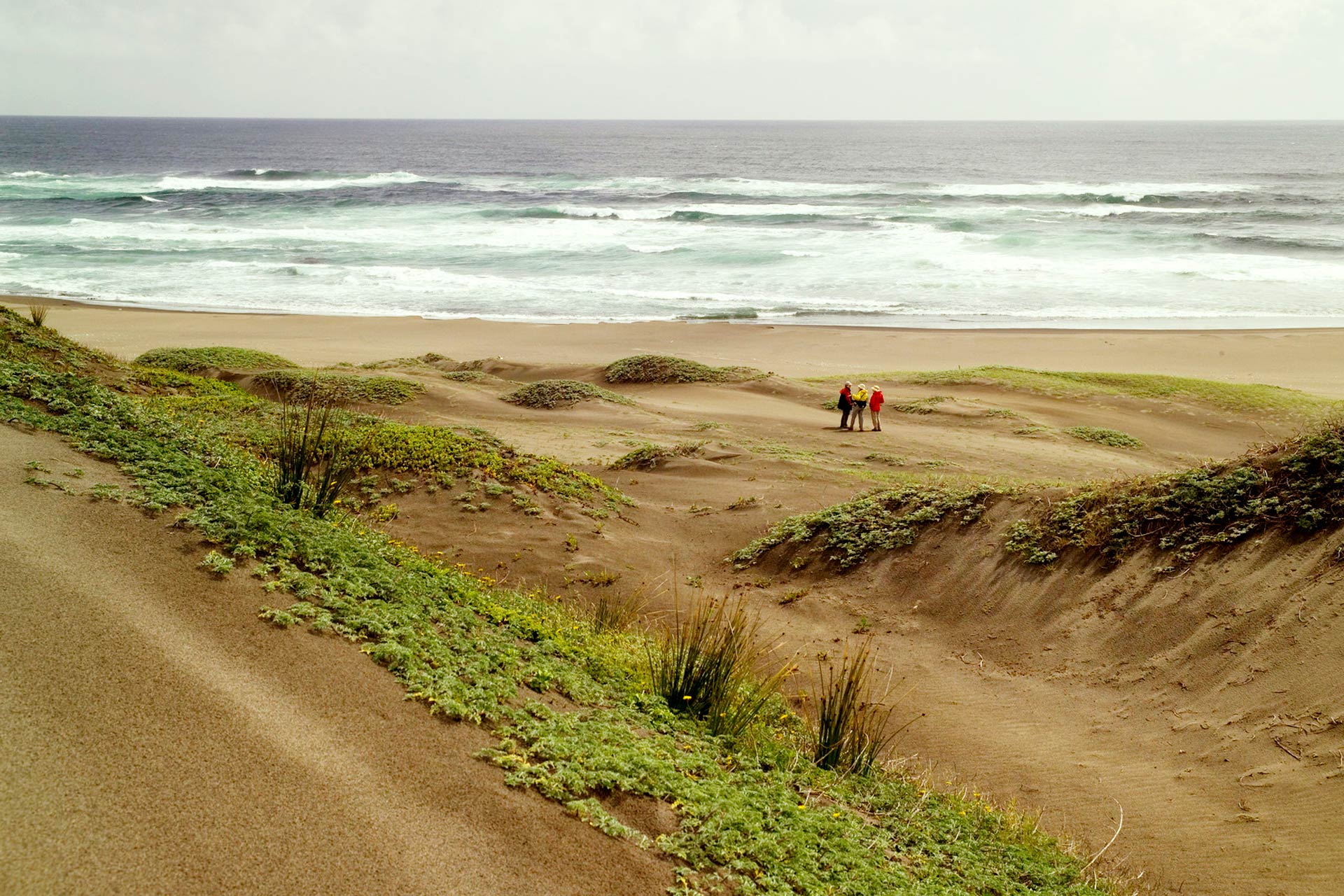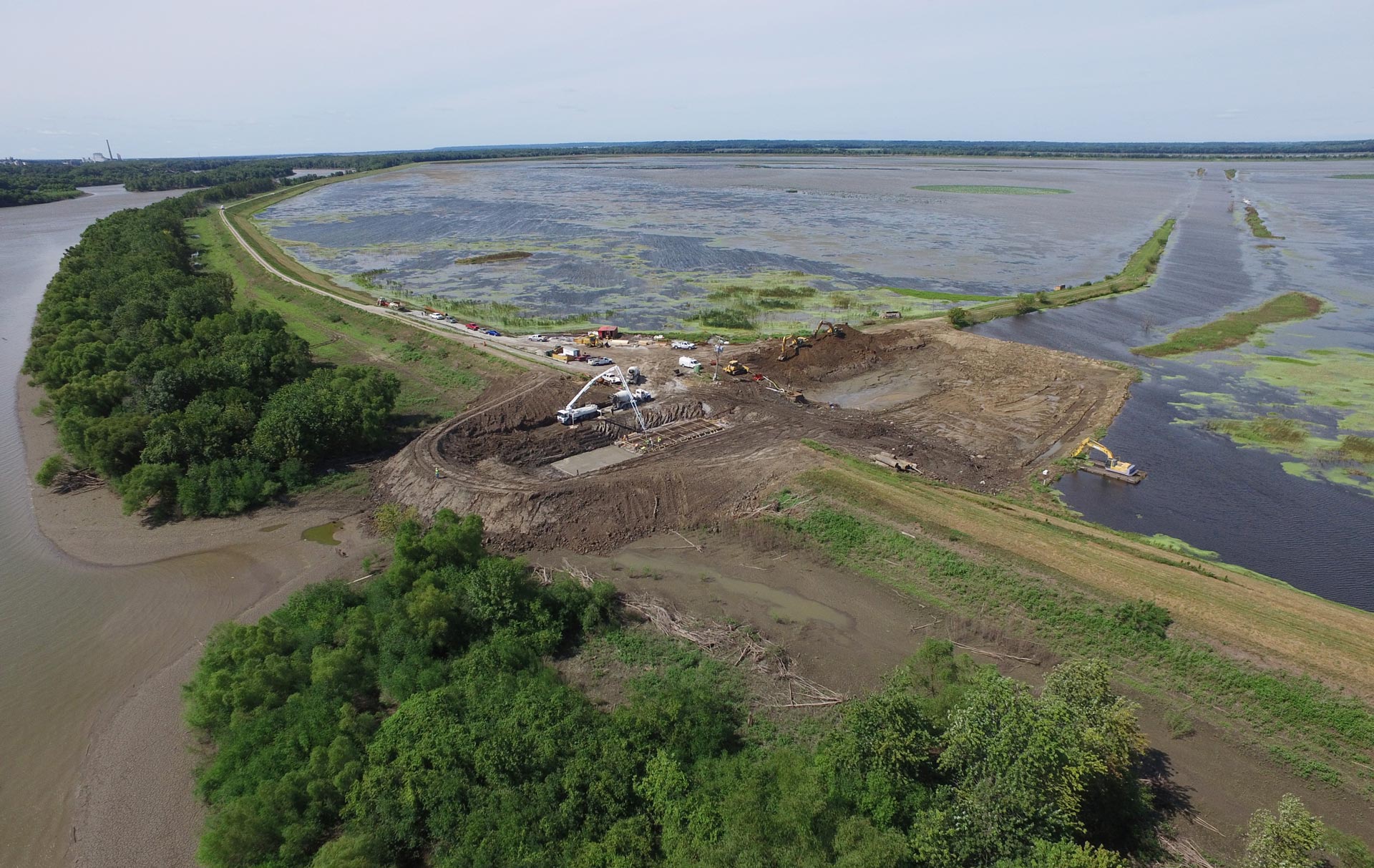South Cape May Meadows, Cape May Point, New Jersey
Challenge
Cape May Point, a small coastal community on the Cape May peninsula of New Jersey, is considered a high-risk flood area due to its relatively flat terrain and its location on the coast combined with the significant hurricanes and nor’easters that blow through with regularity. On Halloween of 1991, the area was hit by the “Perfect Storm.”It caused an estimated $75 million dollars in damages along the New Jersey coastline — $10 million of damages to the beach in Cape May alone. Early in 1992, the Cape May area was hit again, adding to damages and costs. These two storms ignited a growing sense of urgency for more effective flood protection strategies.
Project Details
- Location: Cape May Point, New Jersey
- Population: 291
- Strategies: Beach, dune, and wetland restoration; habitat improvement
- Cost: $15M total + $35M/year for maintenance
- Benefits: reduced flood damages, ecosystem restoration, water quality, recreation
Overview/History
The communities in the Cape May area have a history of falling victim to flooding, coastal storms and coastal erosion. The once vibrant, Victorian resort town of South Cape May was abandoned following the Great Atlantic Hurricane of 1944 and has since eroded away into the ocean. Other areas of Cape May were being lost to erosion at a rate of 15 feet per year.
But, it was the breaching of the dunes by that Halloween storm of 1991, followed by a winter storm in January 1992, that truly fueled the urgency for a coastal risk reduction project.
A study in 2014 estimated cost savings of $9.6M over the next 50 years and revenue benefits of over $300M per year.
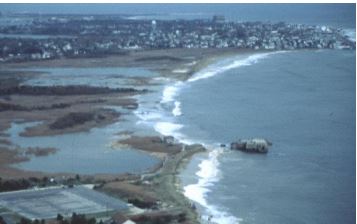
South Cape May Meadows during the dune storm breach in October 1991.
Solution
Following the October storm of 1991, a diverse group of stakeholders, including the U.S. Army Corps of Engineers (USACE), New Jersey Department of Environmental Protection, The Nature Conservancy, and the local governments, met to discuss a potential comprehensive ecological restoration project. By 1998, the USACE completed the feasibility study, funding was secured, and implementation was underway.
During the first phase of the project nearly 1,400,000 cubic yards of sand were used to construct a 1-mile long, 18-ft tall sand dune and widen 2 miles of beach. During the second phase, freshwater wetlands were restored and drainage culverts were added to improve water flow, quality and draining — thereby increasing their ability to prevent flooding.
The restoration of the beach, dune and wetland habitat also served to improve ecosystem functions and habitat quality. Examples include: increased beach-nesting bird habitat, creation of resting and feeding areas for birds within the wetlands, construction of piping plover ponds behind the dune, and removal of Phragmites, an invasive reed which was limiting habitat for migratory birds.
The project was completed in 2007 and restored nearly 460 acres of coastal habitats.
Benefits
The community of Cape May Point has experienced significant economic benefits since the implementation of these nature-based solutions. In 2012, the Cape May peninsula was hit by Superstorm Sandy, but the newly created dune was not breached; while damage to the surrounding area was estimated at $640 million dollars, the newly restored area of Cape May suffered virtually no damage. Prior to the restoration, flood claims in Cape May Point following major storm events averaged $143,713. That number has now dropped to $3,713, leading to a projected flood claims savings of $9.6 million dollars over the next 50 years.
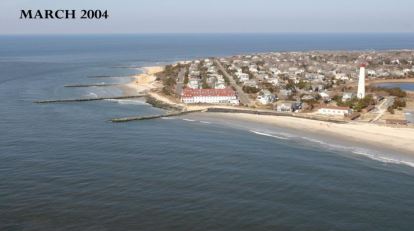
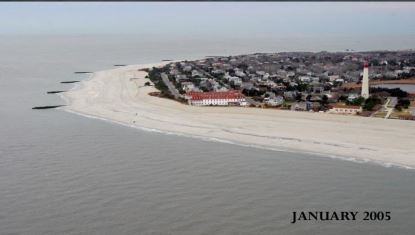
Beach replenishment on the state park beach and around Cape May Point, before (left) and after (right) the restoration. Source: U.S. Army Corps of Engineers 2007.
Furthermore, birds have been flocking to the newly restored habitats — and birdwatchers and the dollars they spend are following. An analysis conducted in 2014 by Elizabeth Schuster of The Nature Conservancy predicted that the ecotourism from these birders will add more than $310 million dollars per year to the county’s revenue.
Finally, the replenished beach has a value of $11 million dollars.
The restoration of South Cape May Meadows offered a unique opportunity to conduct a before-and-after analysis of nature-based solutions, and emerged as a prime example of the significant economic, ecological and social benefits such solutions can provide. The community of Cape May Point is now better protected from the dangers and economic costs of coastal storms, boasts newly restored wildlife habitat and a thriving ecotourism industry, and has even more recreation opportunities for residents and visitors alike.
